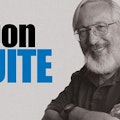RWE Schott's Mike McGoney says that in Germany, farmers are taking fields and pastures out of agricultural production to install grid-tied solar arrays because the economics of solar farming are more favorable than conventional farming. Economic incentives for green power are high in Germany.
Private efforts in the U.S. to produce and sell solar power have been spotty. In the 1980s, some large solar arrays were built at Cramer Junction in California's Mojave Desert. The plants still operate, producing 2% of California's electrical power, and they generate revenues for their owners. But the company that built and promoted them dissolved when fossil-fuel prices dipped in the latter part of the 1980s, and some land-tax incentives were temporarily removed.
That plant is solar-thermal rather than photovoltaic, however. ChevronTexaco has installed a solar photovoltaic facility called Solarmine to help power oil-field operations, near Bakersfield, Calif. The grid-tie project comprises 4800 flexible, current-producing solar panels, each about 1.3 feet wide by 18 feet long, mounted on metal frames.
At 500 kW, Solarmine is one of the largest photovoltaic installations in the U.S. and the largest array of flexible, amorphous-silicon solar technology in the world. Solarmine covers six acres, enabling it to take advantage of Uni-Solar's amorphous-manufacturing economies of scale. (ChevronTexaco owns 20% of Uni-Solar's parent company, ECD.)
About the Author

Don Tuite
Don Tuite (retired) writes about Analog and Power issues for Electronic Design’s magazine and website. He has a BSEE and an M.S in Technical Communication, and has worked for companies in aerospace, broadcasting, test equipment, semiconductors, publishing, and media relations, focusing on developing insights that link technology, business, and communications. Don is also a ham radio operator (NR7X), private pilot, and motorcycle rider, and he’s not half bad on the 5-string banjo.